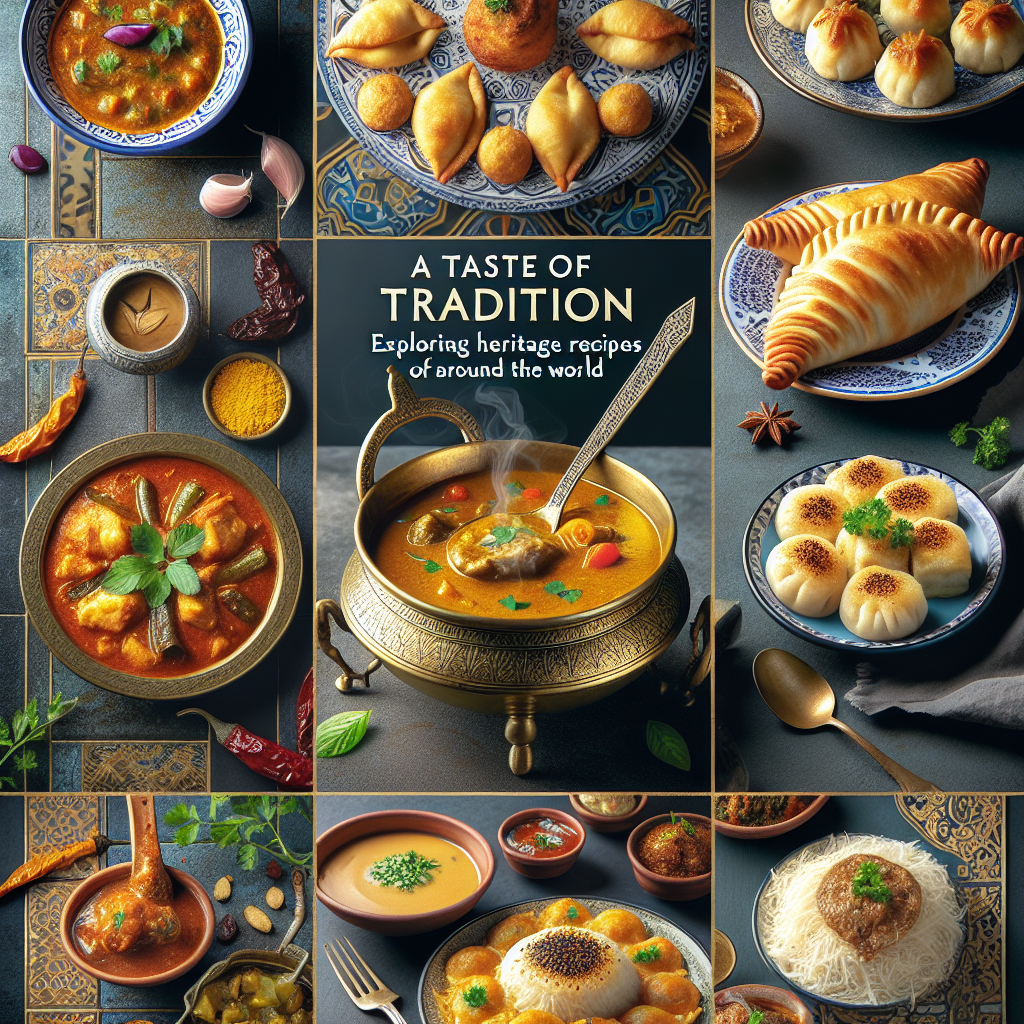A Taste of Tradition: Exploring Heritage Recipes from Around the World
In an ever-globalizing world where culinary trends shift faster than the seasons, there remains an enduring allure to the food traditions passed down through generations. Heritage recipes—those dishes forged from the unique cultural tapestries of our ancestors—provide a vital link to our history. From comforting stews to fragrant pastries, these recipes not only tantalize our taste buds but also connect us to our identities, stories, and, ultimately, to one another.
The Significance of Heritage Recipes
Heritage recipes are more than just a collection of ingredients; they encapsulate the cultural essence of the communities from which they originate. Passed down through families, they are often steeped in stories of love, hardship, and triumph. These dishes hold memories of family gatherings, celebrations, and the warmth of shared meals. They offer insight into the agricultural practices of a region, its climate, and the local ingredients that define its culinary landscape.
At a time when convenience often trumps quality, revisiting heritage recipes can reignite our relationship with food. They encourage a mindful approach to cooking, pushing us to appreciate the process and the ingredients that bear the mark of tradition.
Global Heritage Recipes to Relish
Each corner of the globe boasts its own set of cherished recipes that reflect its culture and history. Here, we explore a few exemplary dishes that highlight the richness of culinary traditions from around the world.
1. Italian Risotto alla Milanese
Risotto alla Milanese is a quintessential dish from Northern Italy, renowned for its creamy texture and saffron infusion. The recipe includes arborio rice, broth, onions, white wine, and a generous amount of Parmigiano-Reggiano. Traditionally made in homes and restaurants alike, this dish is associated with Milanese culinary pride and represents the heart of Italian comfort food.
2. Mexican Mole Poblano
Mole Poblano is a complex sauce featuring a melting pot of flavors—chocolate, chili peppers, spices, and nuts—commonly served over chicken. This dish is steeped in over 400 years of history, originating from the Yucatán and evolving in Puebla. Each family has its own version, making mole a quintessential dish for celebrations and gatherings.
3. Indian Biryani
A symbol of luxury and celebration, biryani is a fragrant rice dish filled with marinated meats or vegetables, spices, and sometimes dried fruits. Originating in Persia and firmly established in Indian cuisine, biryani has a multitude of regional variations—each showcasing local spices and cooking methods. Its layered preparation and intricate flavors are a testament to the complex intermingling of cultures in India’s history.
4. Japanese Okonomiyaki
Often referred to as a "savory pancake," okonomiyaki hails from Japan and varies by region. Traditionally made with a batter of flour, eggs, shredded cabbage, and various toppings like pork, seafood, or cheese, okonomiyaki speaks to the home-cooked essence of Japanese cuisine. The name itself, which translates to "as you like it," embodies the adaptive and personalized nature of this beloved dish.
5. Ethiopian Doro Wat
Doro Wat is a rich chicken stew made with a blend of spices, including berbere, and served with injera, a fermented flatbread. This dish is central to Ethiopian dining culture and often prepared for communal gatherings and special occasions. Its deep flavors and communal style embody the spirit of hospitality and togetherness that is prevalent in Ethiopian culture.
Reviving and Preserving Culinary Heritage
In the face of modernity, many chefs and home cooks are taking it upon themselves to revive and preserve these culinary treasures. Schools, community organizations, and cultural festivals are often dedicated to passing on the knowledge of these treasured recipes, ensuring that techniques don’t fade into obscurity.
Moreover, social media has transformed the way we share these recipes, allowing for the creation of global communities built around the appreciation of culinary heritage. Cooking classes, food blogs, and Instagram accounts celebrate traditional cooking methods, offering both tips and personal stories that breathe new life into age-old recipes.
Conclusion
Heritage recipes are not merely food; they are stories written in flavors, aromas, and textures. They are representative of cultural identity and global interconnectedness. By exploring and cherishing these traditional dishes, we honor the past while also enriching our present experiences around food. As we gather around tables laden with flavors from distant lands, we not only nourish our bodies but also forge connections that transcend borders, cultures, and generations. Embracing heritage recipes is an embrace of humanity itself—a celebration of our shared histories through the universal language of food.
